编者按1
“第七届广州三年展策展人访谈系列”是广东美术馆为深化学界和大众对本届主题“化作通变”以及展览结构的理解、呈现策展人在展览筹划背后的个人思考而开设的专题系列。本系列将分别呈现本次展览总策展人王绍强(中国),主题展策展人吴洪亮(中国)、菲利普·多德(英国)、艾墨思(德国)、姜俊(中国)对展览的构建与阐述,深入探讨展览如何在历史维度中“思变”,当代观察中“应变”,构想未来可能的“转变”,以四部片段化的叙事折射时代的光斑及其所产生的影响。
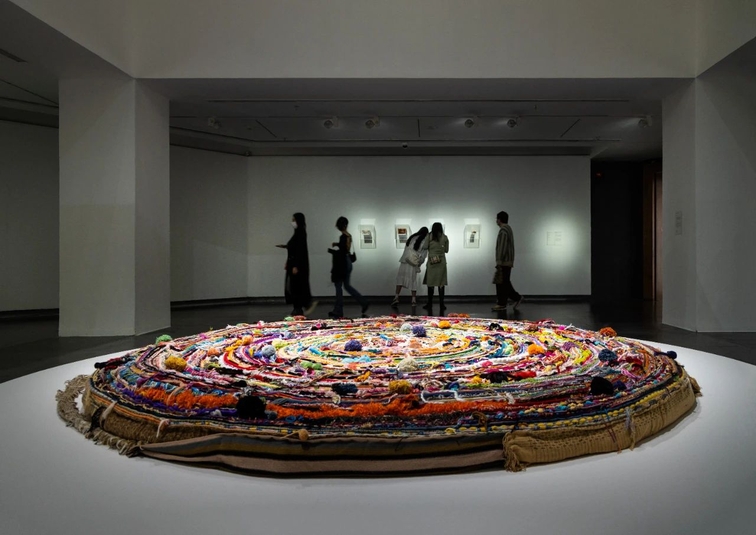
您是怎样理解“化作通变”这个大主题的?您的题目“慢板”在某种意义上看,正是“变化”的一种反义词,所以该板块更多是对于“变化”的一种反思与抵抗么?
在世界任何地方,没有人会怀疑一切都处在永恒的“变化”。即使全球化的某个阶段已经结束,也意味着一种“变化”;如果全球化继续下去,那就等于“变化”。所有“化作通变”探讨了我们正在经历着的“变化”的本质。在所有的交响乐中,都有不和谐和冲突,而我在本届三年展中的策展部分提出了一个不同的“变化”模式——它不是在抵制“变化”。
在我看来,“慢板”不是“变化”的反义词。在很多的“慢运动”中,人们过多地强调“慢”作为“快”的反义词,而“慢板”则比这有着更多有趣的层次。Arden Reed的书中主要强调了“慢的观看”,但是,我认为仍是低估了“慢 ”的重要性。慢是关注于在地性、特殊性,以及一切行动对于人类和自然世界产生的影响。对我来说,三年展中的 “慢板”部分提出了一种不同的“变”,与主流的“变化”叙事所赞美的不同,主流的变化是市场、商品化、加速、技术决定论等——关于全球化的方方面面。我的展览部分也提出了变化,但这种变化不受市场的摆布。
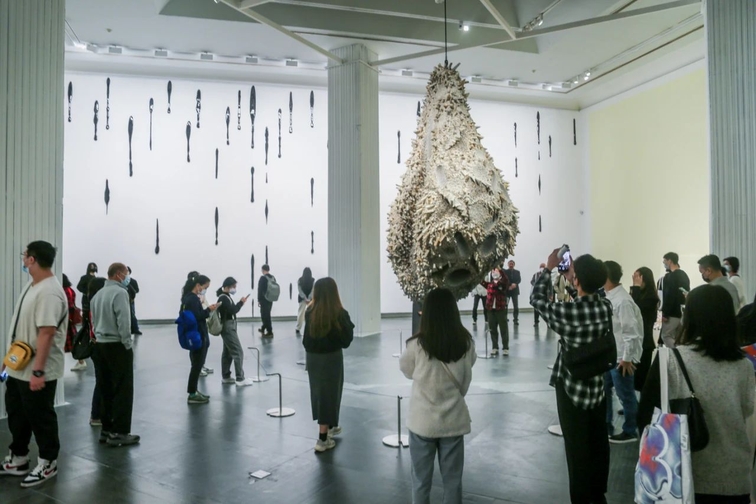
△展览现场
How do you understand the overall theme of “Symphony of all the Changes"? In a sense, your title Adagio is an antonym for "change"; does such a title indicate a reflection on and resistance to change?
No one, anywhere in the world, doubts that everything is changing. Even if a certain phase of globalisation is at an end, that means change. If globalisation continues, then that equals change. 'Symphony of all changes' explores the nature of change through which we are living. In all symphonies, there are dissonances and conflicts. My part of the Triennial is proposing a different model of change: it is not resisting change.
'Slow Art' is not, in my view, an antonym to change. Too much emphasis has been placed in Slow Movements on 'slow' as an antonym to 'fast'. Slow Art is more interesting than that. Arden Reed's book emphasises 'slow looking'. But again, I think that is to underrate the importance of Slowness. Slow is attentive to the local and to the particular, to the effects that nay action has on the human and natural world. For me, the Slow Art section of the Triennial proposes a different kind of change from that celebrated in the dominant narrative of change, which prises the market, commodification, acceleration, technological determinism - all aspects of the dominant version of globalisation. My part of the exhibition proposes change - but a change that is not at the mercy of the market.
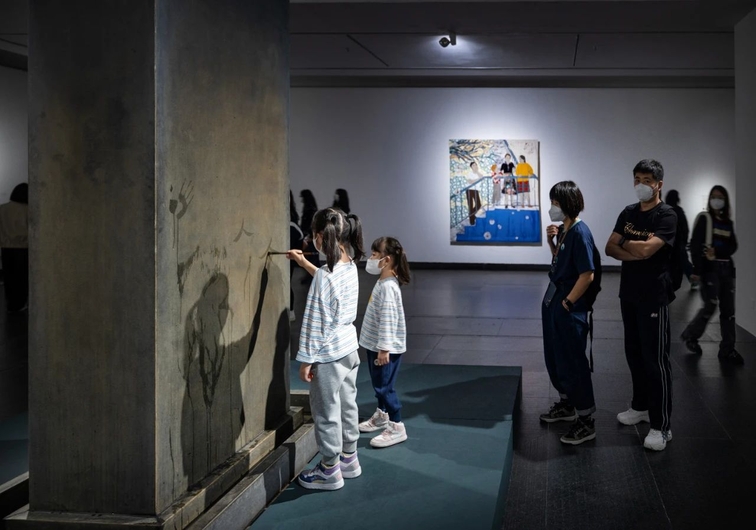
△展览现场
“慢”的呼吁从未停止过,比如“慢食运动”(Slow Food movement)和“慢‘性’运动”(Slow Sex movement),还有近几年来在博物馆中推行的“慢艺术日”(Slow Art Day)等。有人认为“慢”是反对数字虚拟与当代性的,那么在您看来“慢”的态度与宣言中都包含哪些思考方向?
正如我上面所说的关于“慢”,人们将太多的注意力放在与“快”的对立之上。有趣的问题是:在一个日益数字化的世界里,人们为什么对陶瓷、纺织品和纸本媒介的艺术种类的兴趣在不断增长。这些作品通常是比较小型的——即使是精心策划的装置。它们是有形的,充满了重力(双重意义上的“重力”)。
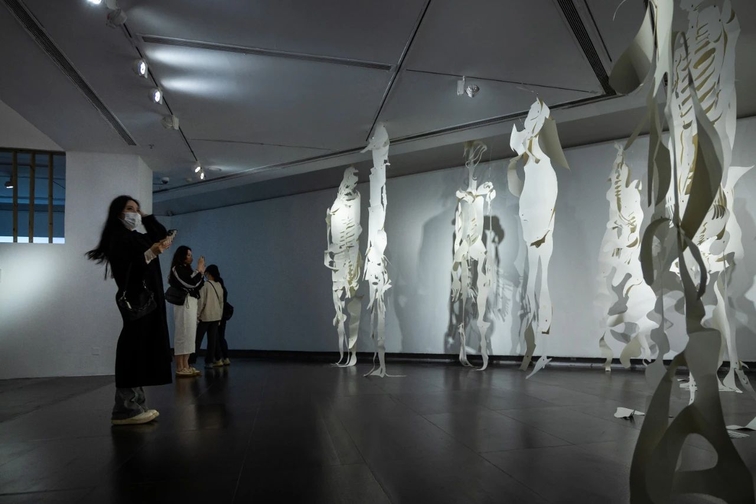
△展览现场
In fact, the call to slow down has remained consistent, evident in the "Slow Food“ movement and the "Slow Sex” movement, as well as the "Slow Art" that has been promoted in museums in recent years, through “Slow Art Day” and so on. Some people think that emphasizing slowness is a reaction running contrary to digital virtuality and contemporaneity. So in your opinion, what are the rationale and motivation behind the attitude, let’s say the manifesto of "slow"?
As I say above, too much attention has been given to 'slow' in opposition to 'fast'. the interesting question is: in an increasingly digitized world why is it that there is a developing interest in kinds of art made in ceramic, textile and paper. These are often small works - even if orchestrated in installations. They are tangible and full of gravity (in both senses of that word).
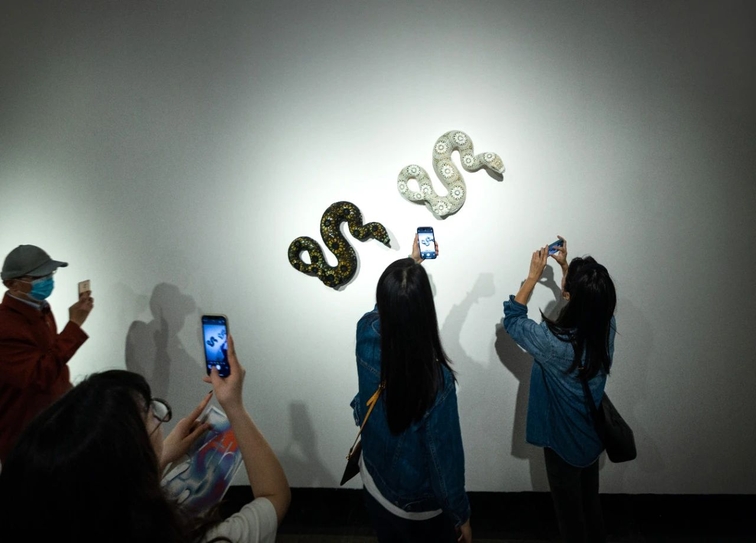
△展览现场
Arden Reed的新书《慢艺术: 观看经验,从圣象画到詹姆斯·特瑞尔》(Slow Art: The Experience of Looking, Sacred Images to James Turrell)建构了“新美学领域”的相关理论——“新美学领域”是他所观察到的通过减速与慢拍获得的美学经验。您是如何选择与组织关于“慢板”题目下的艺术家作品的?是否会更多的选择传统媒介材料的作品?
我主要的考量是从更广泛的文化中选择艺术家——即有基于如美国和中国这样影响力比较大的艺术文化创作的艺术家,也有来自不太知名的文化背景中的艺术家,如波兰和拉脱维亚。 我不认为慢艺术是一个新的美学领域,我认为它更像是一个星群。用Walter Benjamin的话来说就是:我正在建立一种跨文化和跨时代的联系,而其中的这些艺术家证明了陶瓷、纸本、纺织品(甚至水和烟)仍然可以解决当代问题。这些作品都是针对当代问题的,他们的骨子里是面向未来的。并且我试图囊括进更加大量的女性艺术家。
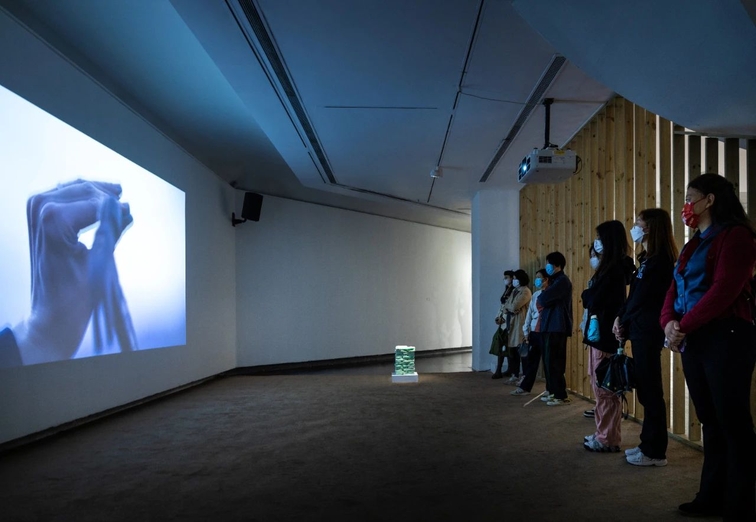
△展览现场
Arden Reed's new book Slow Art: The Experience of Looking, Sacred Images to James Turrell constructs the relevant theory of a "new aesthetic field" - an aesthetic he experienced through deceleration and slow motion. How did you select and organize the works of artists according to the concept of "Adagio"? Will more traditional media works and materials be chosen?
I intended to select artists from a wide range of cultures - major art cultures such as the US and China as well as lesser known ones such as Poland and Latvia. I do not think that Slow Art is a new aesthetic field. I think it is more of a constellation, to use the phrase of Walter Benjamin. I am making connections across cultures and across generations with artists who demonstrate that ceramic, paper, textile (and even water and smoke) can still address contemporary issues. These works are all addressed to contemporary matters. They have the future in their bones. I have tried to include a good number of women artists.
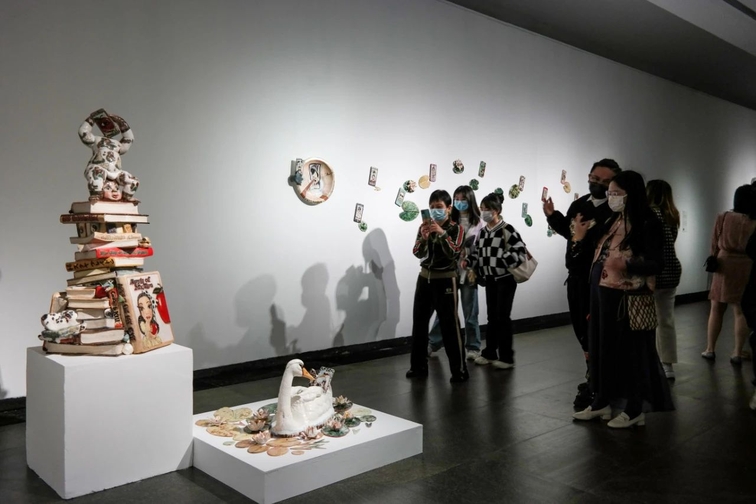
△展览现场
在您的论述中有特别提到“避免落入寻找‘下一位炙手可热的年轻艺术家’的俗套”。那么您对于年轻艺术家是持有怎样的观点?或是说,您反对的并不是年轻艺术家而是艺术作品的商品化?
我不反对年轻艺术家,只是市场需要新奇和新鲜感,并常常将老式艺术当作过时的东西来处理——而艺术界有太多的人关注艺术的市场化。为了对抗这种趋势,我特意选择了不同年代的艺术家。对我来说,目前比年代问题更重要的是文化定位问题。据我所知,这是第一次有来自拉脱维亚的艺术家参加的广州三年展。
这是在现有美术馆空间最后一次呈现广州三年展(因为2023年广东美术馆白鹅潭新馆即将落成,未来的广州三年展展出场地也将迁往新馆)。“慢板”的全称是“慢艺术礼赞:当一切坚固遁为烟雾都融化在稀薄的空气中时”,世界已经被掏空了,我们需要所有世代的人一起表明,艺术不必受制于全球化和商品化的需求。
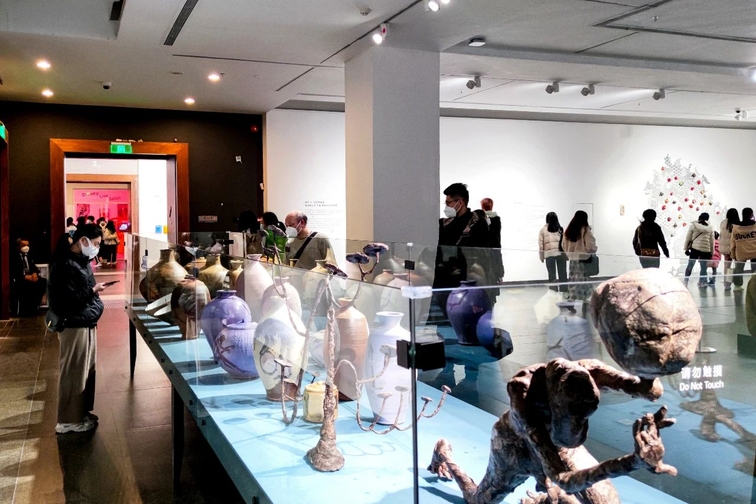
△展览现场
In your essay you specifically caution readers to “avoid falling into the rut of finding the ‘next hot young artist'”. Is this indicative of your opinion on young artists in general? Or is what you object to not young artists themselves, but rather the commodification of artwork?
I do not object to young artists but too much of the artworld is concerned with marketizing art and the market needs novelty and newness, disposing of older art as old fashioned. To counter this tendency I have deliberately chosen artists across a range of generations. For me, more important at present than the question of generation is the question of cultural location. To my knowledge, this is the first time that artists from Latvia have shown in the Triennial.
This is the last Triennial in the existing museum and as a curator I was encouraged to reflect on the period of China's opening up. “Slow Art”s full title is 'In Praise of Slow Art: When Everything Melts into Thin Air' . The world has been eviscerated and we need all the generations to come together to show that art does not have to subject itself to a globalising and commodifying imperative.
展览时间:2023年1月10至2023年4月10日
总策展人:王绍强(中国)
主题展策展人:吴洪亮(中国)、菲利普·多德(英国)、艾墨思(德国)、姜俊(中国)
文献展学术顾问:鲁虹、杨小彦
学术委员:樊林、冯原、顾振清、管郁达、胡斌、冀少峰、吕澎、皮道坚、邱志杰、盛葳、王晓松、夏可君、项笠苹、杨小彦、张晴、张子康(按姓氏拼音排序)
指导单位:广东省文化和旅游厅
主办单位:广东美术馆
特别鸣谢:海南白马广告媒体投资有限公司、珍宝巴士(集团)有限公司
主展场:广东美术馆
平行展:顺德华侨城盒子美术馆、与亨美术馆、VLAB+观空间、东莞21空间美术馆

